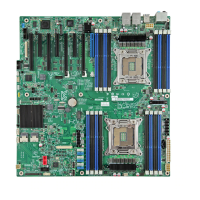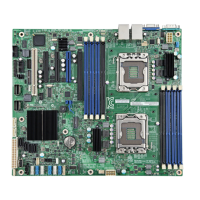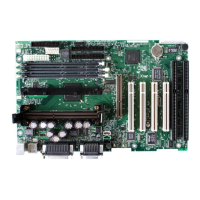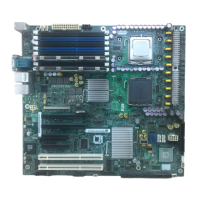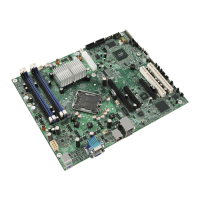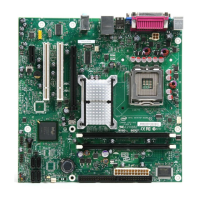Intel® Server Board S2400SC TPS Advanced Management Feature Support (RMM4)
Revision 2.0 Intel order number G36516-002 85
The KVM-redirection feature automatically senses video resolution for best possible screen
capture and provides high-performance mouse tracking and synchronization. It allows remote
viewing and configuration in pre-boot POST and BIOS setup, once BIOS has initialized video.
Other attributes of this feature include:
Encryption of the redirected screen, keyboard, and mouse
Compression of the redirected screen.
Ability to select a mouse configuration based on the OS type.
supports user definable keyboard macros.
KVM redirection feature supports the following resolutions and refresh rates:
640x480 at 60Hz, 72Hz, 75Hz, 85Hz, 100Hz
800x600 at 60Hz, 72Hz, 75Hz, 85Hz
1024x768 at 60Hx, 72Hz, 75Hz, 85Hz
1280x960 at 60Hz
1280x1024 at 60Hz
1600x1200 at 60Hz
1920x1080 (1080p),
1920x1200 (WUXGA)
1650x1080 (WSXGA+)
The Remote Console is the redirected screen, keyboard and mouse of the remote host system.
To use the Remote Console window of your managed host system, the browser must include a
Java* Runtime Environment plug-in. If the browser has no Java support, such as with a small
handheld device, the user can maintain the remote host system using the administration forms
displayed by the browser.
The Remote Console window is a Java Applet that establishes TCP connections to the BMC.
The protocol that is run over these connections is a unique KVM protocol and not HTTP or
HTTPS. This protocol uses ports #7578 for KVM, #5120 for CDROM media redirection, and
#5123 for Floppy/USB media redirection. When encryption is enabled, the protocol uses ports
#7582 for KVM, #5124 for CDROM media redirection, and #5127 for Floppy/USB media
redirection. The local network environment must permit these connections to be made, that is,
from the firewall and, in case of a private internal network, the NAT (Network Address
Translation) settings have to be configured accordingly.
The remote display accurately represents the local display. The feature adapts to changes to
the video resolution of the local display and continues to work smoothly when the system
transitions from graphics to text or vice-versa. The responsiveness may be slightly delayed
depending on the bandwidth and latency of the network.
Enabling KVM and/or media encryption will degrade performance. Enabling video compression
provides the fastest response while disabling compression provides better video quality.
For the best possible KVM performance, a 2Mb/sec link or higher is recommended.
The redirection of KVM over IP is performed in parallel with the local KVM without affecting the
local KVM operation.
The KVM redirection feature supports multiple encryption algorithms, including RC4 and AES.
The actual algorithm that is used is negotiated with the client based on the client’s capabilities.
